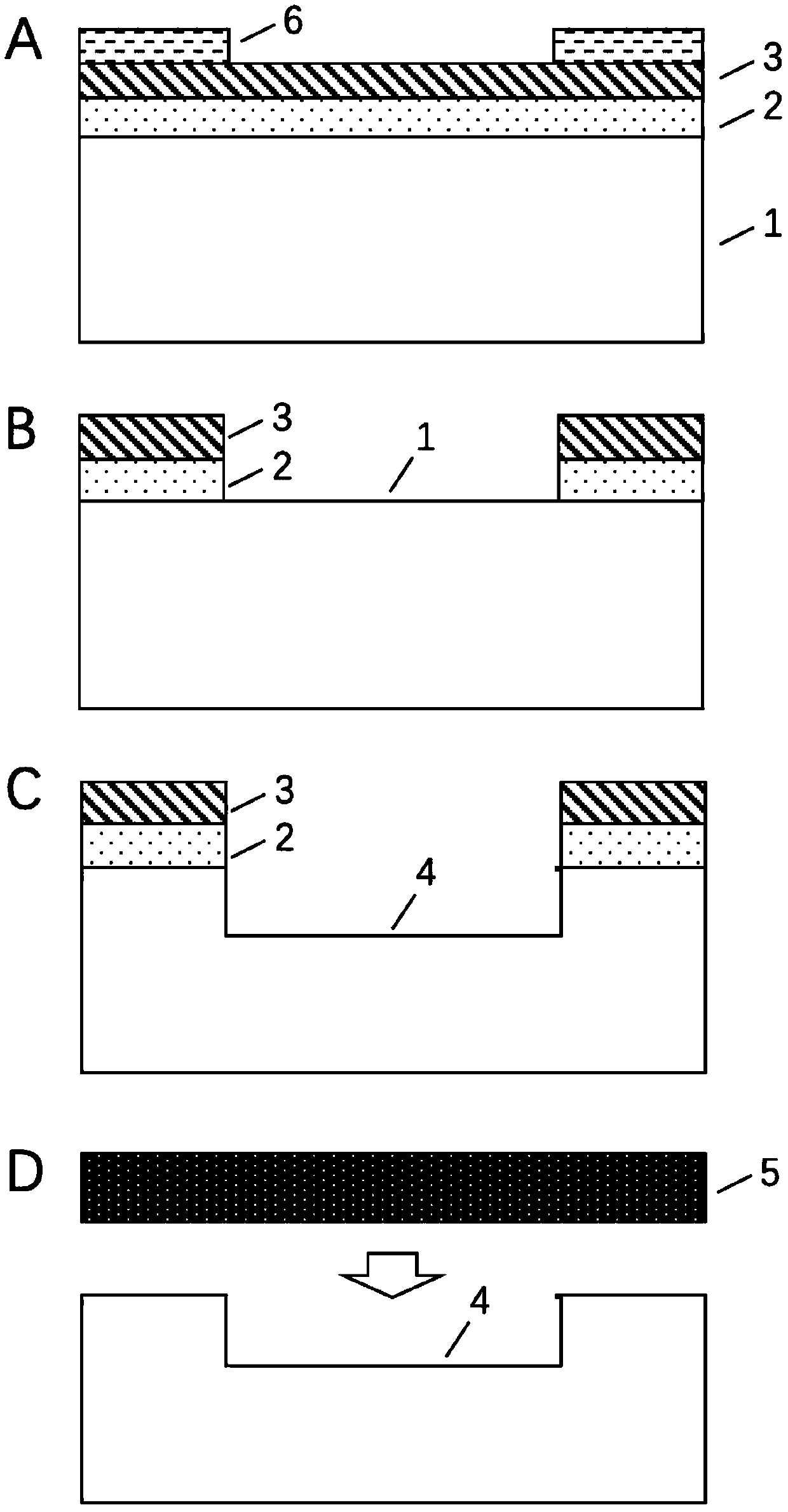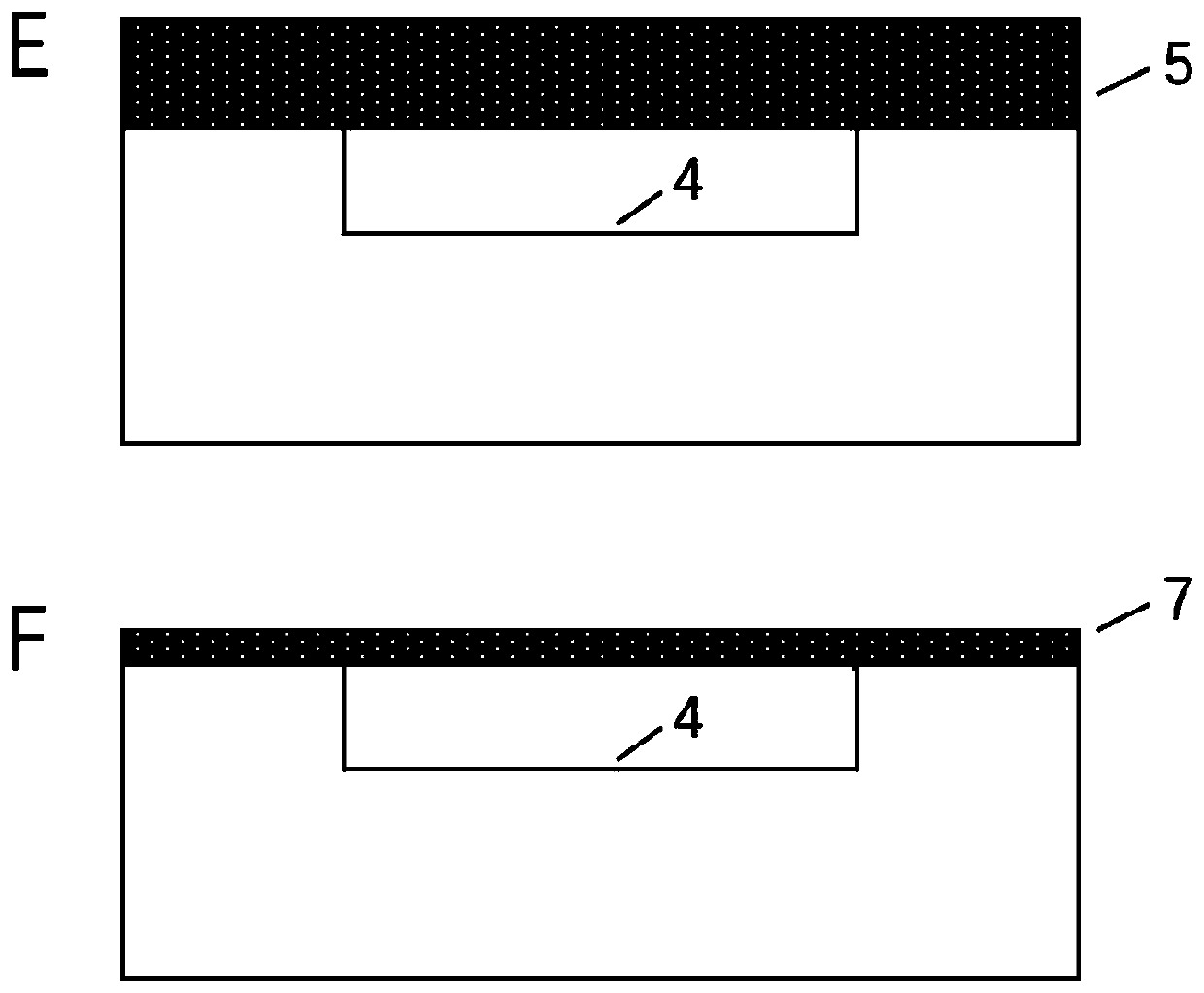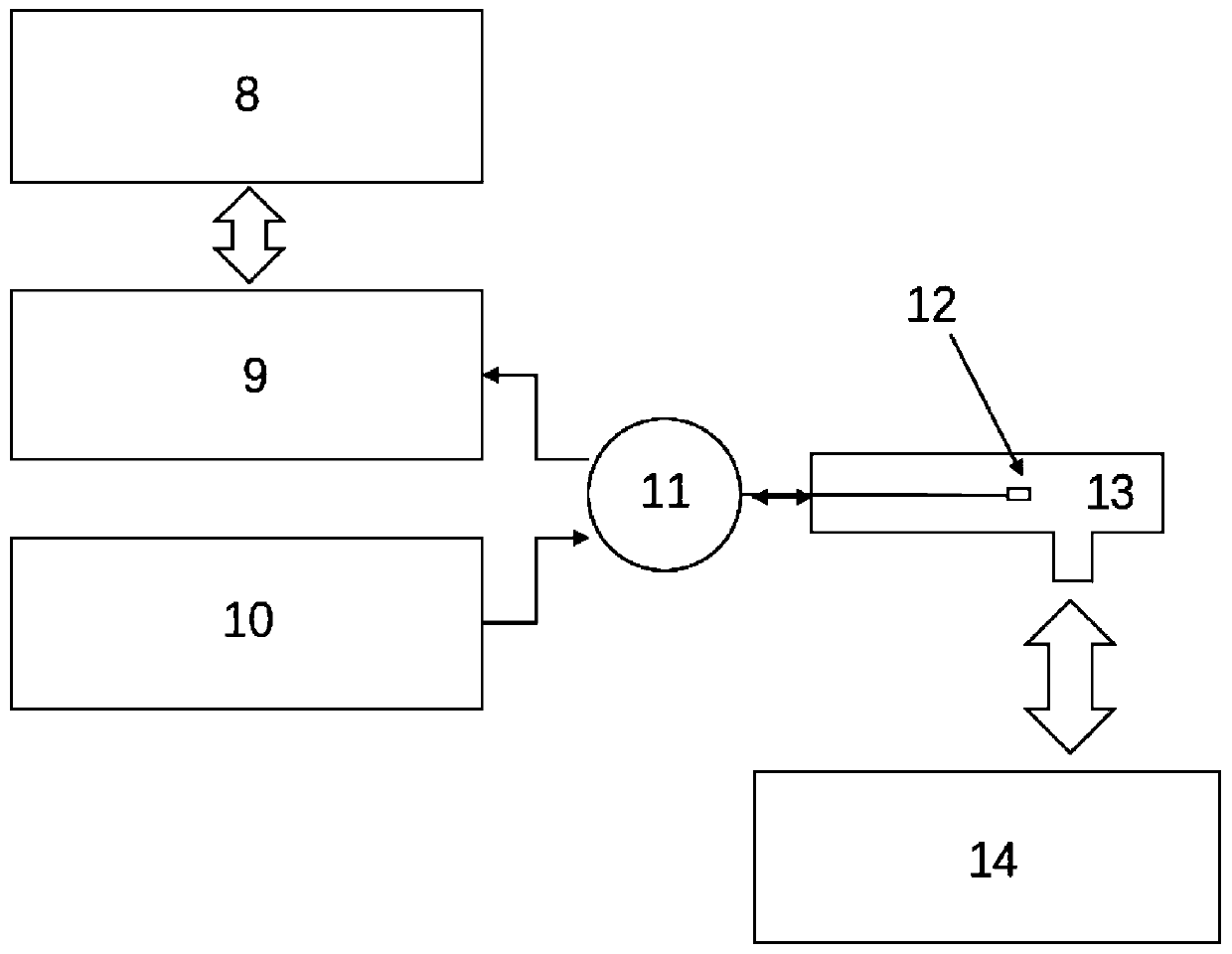Method for regulating and controlling F-P optical fiber sensor sensitivity through intracavity gas pressure
A technology of optical fiber temperature and gas pressure, applied in thermometers, thermometers with physical/chemical changes, instruments, etc., can solve the problems of inability to control temperature test sensitivity, inability to achieve high-sensitivity test temperature, etc., to achieve easy implementation and simple method , the effect of improving the degree of perception
- Summary
- Abstract
- Description
- Claims
- Application Information
AI Technical Summary
Problems solved by technology
Method used
Image
Examples
Embodiment 1
[0046] A method for regulating the sensitivity of an F-P optical fiber temperature sensor through gas pressure in a cavity, comprising the following steps, the process steps are as follows figure 1 Shown:
[0047](1) successively sputtering thickness is the Ni film 2 of 200nm and the Au film 3 of 800nm on the surface of borosilicate glass 1, forms Ni / Au alloy thin film; Layer photoresist positive resist (AZ1500) 6, then align the photoresist plate for exposure and development, and put it into the positive resist developer to wash off the excess; as figure 1 a.
[0048] The patterned borosilicate glass is etched with Au etching solution and Ni etching solution successively, and the etching time is 5 minutes and 1 minute respectively; the Au etching solution is iodine, potassium iodide, water in a mass ratio of 1:5:20 Mixed solution; the Ni corrosion solution is hydrochloric acid with a mass fraction of 10%. After etching, wash off the photoresist mask with acetone to form ...
Embodiment 2
[0053] With the method for regulating the sensitivity of the F-P optical fiber temperature sensor by the gas pressure in the cavity described in Example 1, the difference is that:
[0054] Step (2) During the bonding process, adjust the pressure of the vacuum chamber of the bonding furnace so that the pressure of the vacuum chamber is 0.02 MPa, and prepare a sample with a pressure of 0.02 MPa in the sealed cavity between the silicon wafer and the borosilicate glass.
Embodiment 3
[0056] With the method for regulating the sensitivity of the F-P optical fiber temperature sensor by the gas pressure in the cavity described in Example 1, the difference is that:
[0057] Step (2) During the bonding process, adjust the pressure of the vacuum chamber of the bonding furnace so that the pressure of the vacuum chamber is 0.03 MPa, and prepare a sample with a pressure of 0.03 MPa in the sealed cavity between the silicon wafer and the borosilicate glass.
PUM
| Property | Measurement | Unit |
|---|---|---|
| thickness | aaaaa | aaaaa |
| thickness | aaaaa | aaaaa |
| thickness | aaaaa | aaaaa |
Abstract
Description
Claims
Application Information
 Login to View More
Login to View More - R&D
- Intellectual Property
- Life Sciences
- Materials
- Tech Scout
- Unparalleled Data Quality
- Higher Quality Content
- 60% Fewer Hallucinations
Browse by: Latest US Patents, China's latest patents, Technical Efficacy Thesaurus, Application Domain, Technology Topic, Popular Technical Reports.
© 2025 PatSnap. All rights reserved.Legal|Privacy policy|Modern Slavery Act Transparency Statement|Sitemap|About US| Contact US: help@patsnap.com



